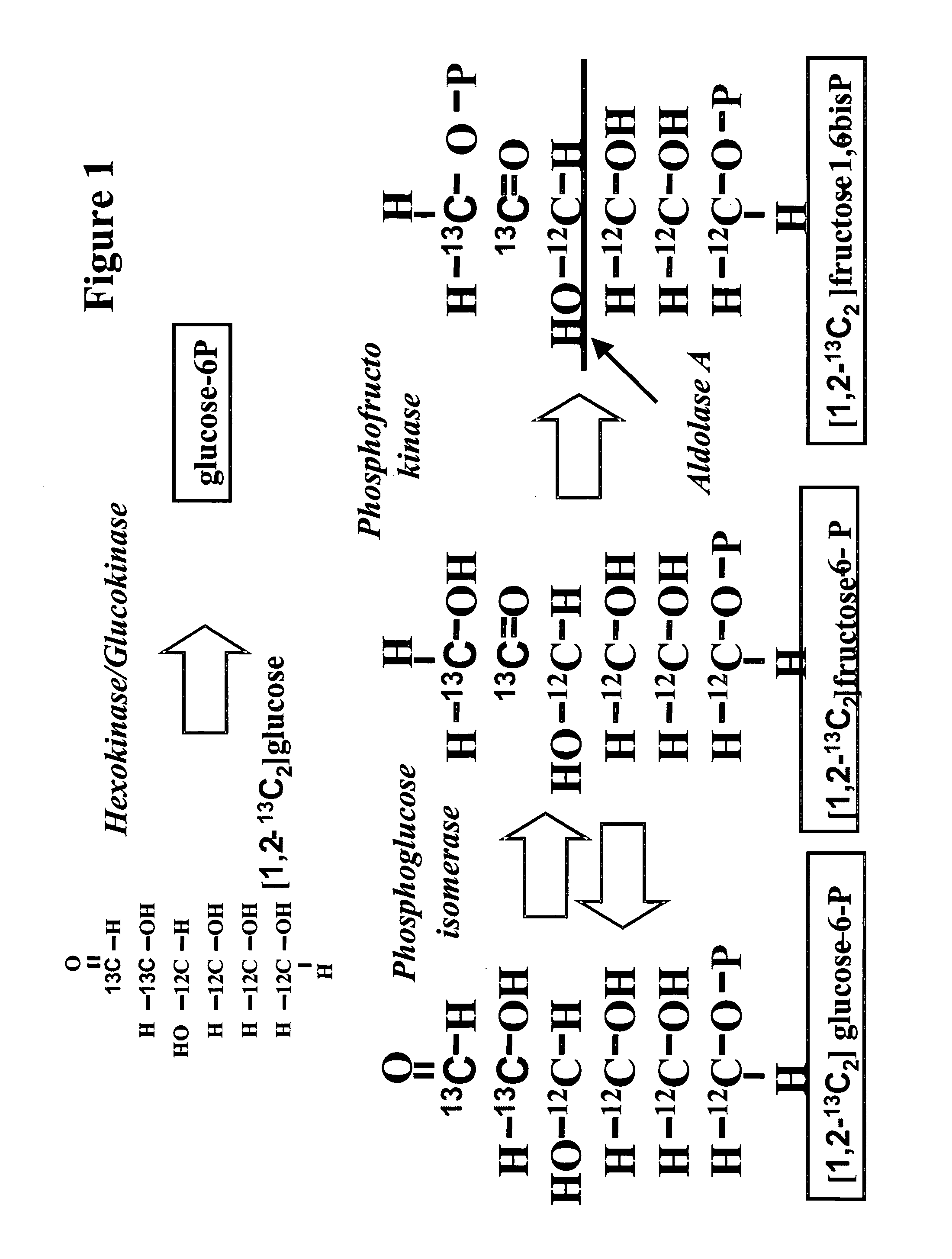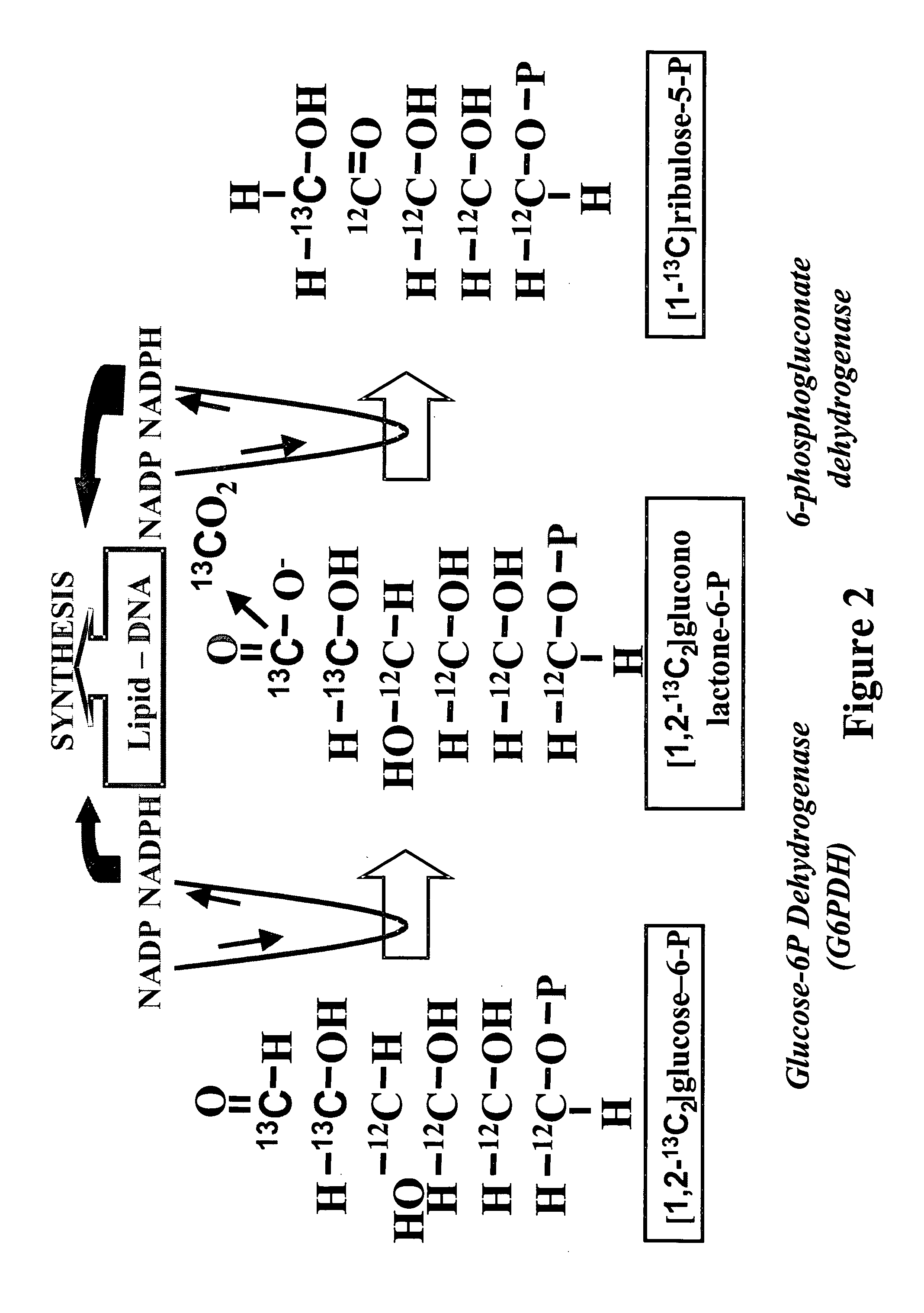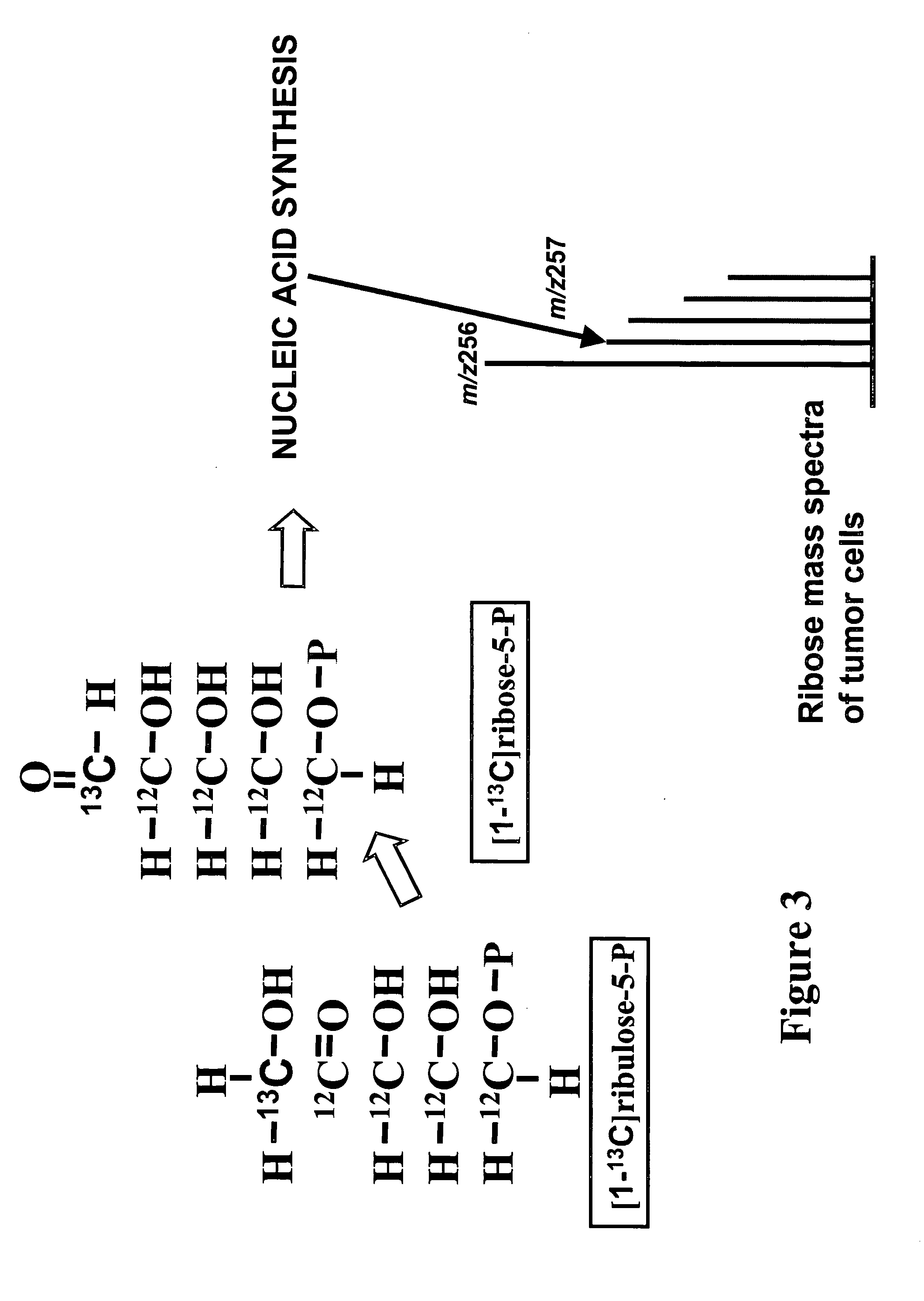Methods and compositions for determining targeted drug sensitivity and resistance in a cancer subject
a cancer subject and sensitivity analysis technology, applied in the field of biochemical methodologies, can solve the problems of narrow limit of targeted drugs, inability to accurately elucidate particular enzymatic reactions using static metabolic profiling, and severely outdated and incorrect model systems based on classic metabolomics. achieve the effect of accurately calculating the ratio, accurately measuring the ratio, and accurately subtracting the abundance of natural 13
- Summary
- Abstract
- Description
- Claims
- Application Information
AI Technical Summary
Benefits of technology
Problems solved by technology
Method used
Image
Examples
example 1
Correlation of Changes in the Ratio of [1-13C1]-D-Ribose to [1,2-13C2]-D-Ribose in Tumor Cells from CML Patients Undergoing Imatinib (Gleevec) Treatment
[0069] Myeloid (K-562) cells were obtained from peripheral blood of patients suffering from CML undergoing cancer therapy with Gleevec and cultured in vitro using standard culture conditions. These cultured CML myeloid cells were exposed to varying concentrations of Gleevec and contacted with [1,2-13C2]-D-glucose. Samples of the treated cell cultures were isolated and subjected to ribose mass spectral analysis to obtain the ratio of [1-13C1]-D-ribose to [1,2-13C2]-D-ribose in the samples of the treated cell cultures. In this experiment, a cut off point of 0.65 or below to detect resistance was used, as it is known that K562r and LAMA84r cell lines do not respond well even to high doses of Gleevec treatment. The results of these studies are shown in FIG. 5. Myeloid cells from two patients have m1 / m2 ratios below 0.65, as indicated by...
example 2
Correlation of Changes in the ratio of [1-13C1]-D-Ribose to [1,2-13C2]-D-Ribose in Cultured Cell Lines Treated with Gleevec and Hydroxyurea
[0070] The ability of non-kinase inhibitor cancer therapeutics to alter the ratio of [1-13C1]-D-ribose to [1,2-13C2]-D-ribose in human cancers was investigated. Rat neuroblastoma (C6) cells are known to be sensitive to imatinib treatment; the ratio of [1-13C1]-D-ribose to [1,2-13C2]-D-ribose in cultured rat C6 neuroblastoma cells increases from 2.35 to 2.97 following treatment with 3.0 μM Gleevec. (See FIG. 6.) Cultured rat C6 neuroblastoma cells were incubated with 100 μM hydroxyurea. The ratio of [1-13C1]-D-ribose to [1,2-13C2]-D-ribose in hydroxyurea-treated cells increased (to 3.59) by hydroxyurea treatment.
PUM
| Property | Measurement | Unit |
|---|---|---|
| Electrical resistance | aaaaa | aaaaa |
| Ratio | aaaaa | aaaaa |
| Therapeutic | aaaaa | aaaaa |
Abstract
Description
Claims
Application Information
 Login to View More
Login to View More - R&D
- Intellectual Property
- Life Sciences
- Materials
- Tech Scout
- Unparalleled Data Quality
- Higher Quality Content
- 60% Fewer Hallucinations
Browse by: Latest US Patents, China's latest patents, Technical Efficacy Thesaurus, Application Domain, Technology Topic, Popular Technical Reports.
© 2025 PatSnap. All rights reserved.Legal|Privacy policy|Modern Slavery Act Transparency Statement|Sitemap|About US| Contact US: help@patsnap.com



